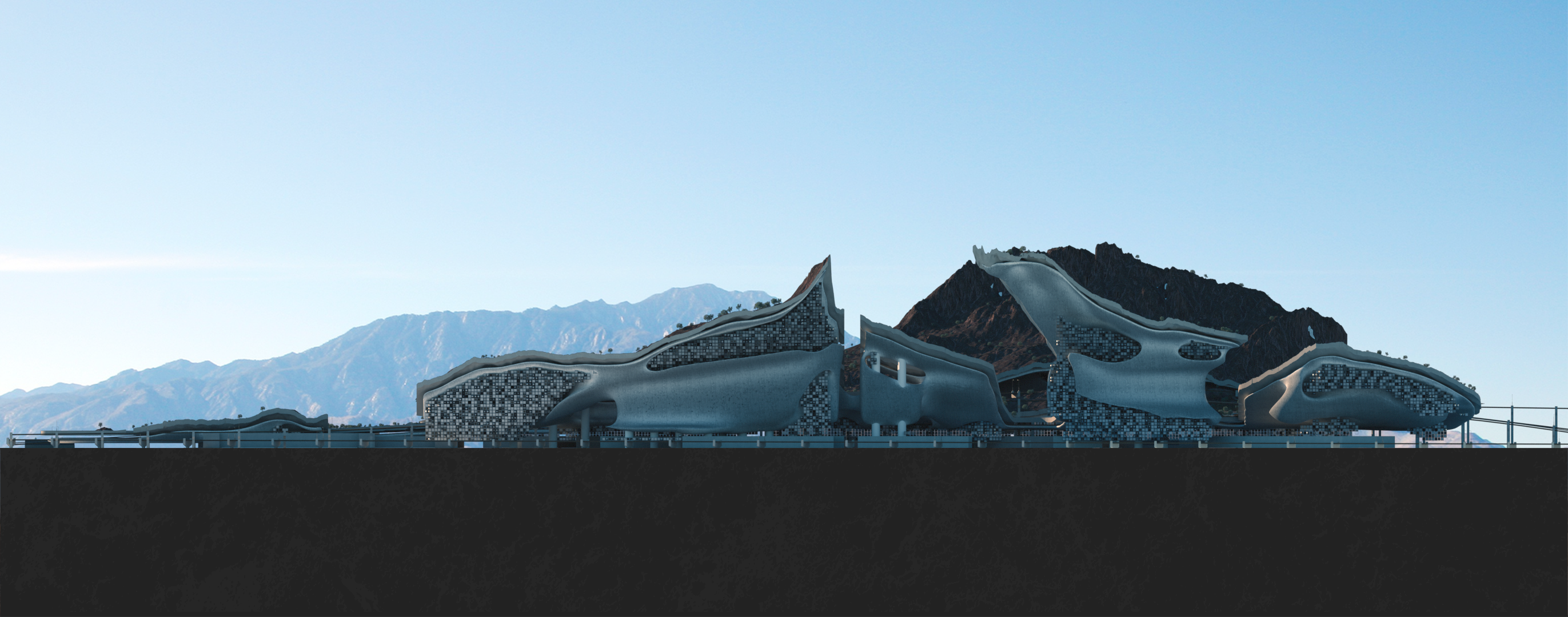OROGENESIS
DOC 234—34/2




DEUS: 088/26812—81
REX-13: 978-0882681/283
REX-13: 978-0882681/283
Throughout the history of art and architecture, the landscape has been romanticized as separate from production, an idealized place of respite from the industrial constructs that spread across the planet's surface. Landscape imagery in the late 20th century, both painting and photography, emphasized the industrial or agricultural object as a withdrawn object dwarfed by the serene, idyllic landscape it was placed in. As we hurdle towards climate catastrophe, the post industrial exurbs we create have reversed this dynamic, placing the landscape as the object (hyperopject) that retreats with increasing speed from our understanding. This thesis attempts to examine how that relationship realizes itself in the built environment, how the landscape as a withdrawn object looks and functions.
The reversal of the access / withdrawal dynamic between the industrial/post industrial object and the landscape, removes the romantic idealism that we often bring to discussions of natural vs human, instead forcing us to consider that all contemporary landscape are in fact synthetic
productions, and the seemingly pristine untouched wilderness’ are just as fabricated as the distribution plains of contemporary mega-cities are natural. The removal of this idealism and dichotomization then allows us to explore what the intentional synthesis of landscape can provide both aesthetically and functionally to the built environment. The reversed placement of the landscape, the removal of its accessibility and immediacy then allows for a new set of questions to be asked about how and where synthetic geologies become appropriate.
By reversing the positions of the mechanical object and the landscape in 3d space this philosophical reversal is made literal. The implication being that the futures of earth's natural green spaces are dependent on large scale human intervention to preserve them. The large amorphous under skin serves to both obscure the storage capacity of the facility as well as allow the object as a whole an avenue to withdraw from the viewer. By strategically hiding and revealing both the structure and function, the object further resists the immediate recognition of both its purpose and program. These processes activate the landscape and shift it from the realm of idealism to active participant in its own preservation.
The reversal of the access / withdrawal dynamic between the industrial/post industrial object and the landscape, removes the romantic idealism that we often bring to discussions of natural vs human, instead forcing us to consider that all contemporary landscape are in fact synthetic
productions, and the seemingly pristine untouched wilderness’ are just as fabricated as the distribution plains of contemporary mega-cities are natural. The removal of this idealism and dichotomization then allows us to explore what the intentional synthesis of landscape can provide both aesthetically and functionally to the built environment. The reversed placement of the landscape, the removal of its accessibility and immediacy then allows for a new set of questions to be asked about how and where synthetic geologies become appropriate.
By reversing the positions of the mechanical object and the landscape in 3d space this philosophical reversal is made literal. The implication being that the futures of earth's natural green spaces are dependent on large scale human intervention to preserve them. The large amorphous under skin serves to both obscure the storage capacity of the facility as well as allow the object as a whole an avenue to withdraw from the viewer. By strategically hiding and revealing both the structure and function, the object further resists the immediate recognition of both its purpose and program. These processes activate the landscape and shift it from the realm of idealism to active participant in its own preservation.





